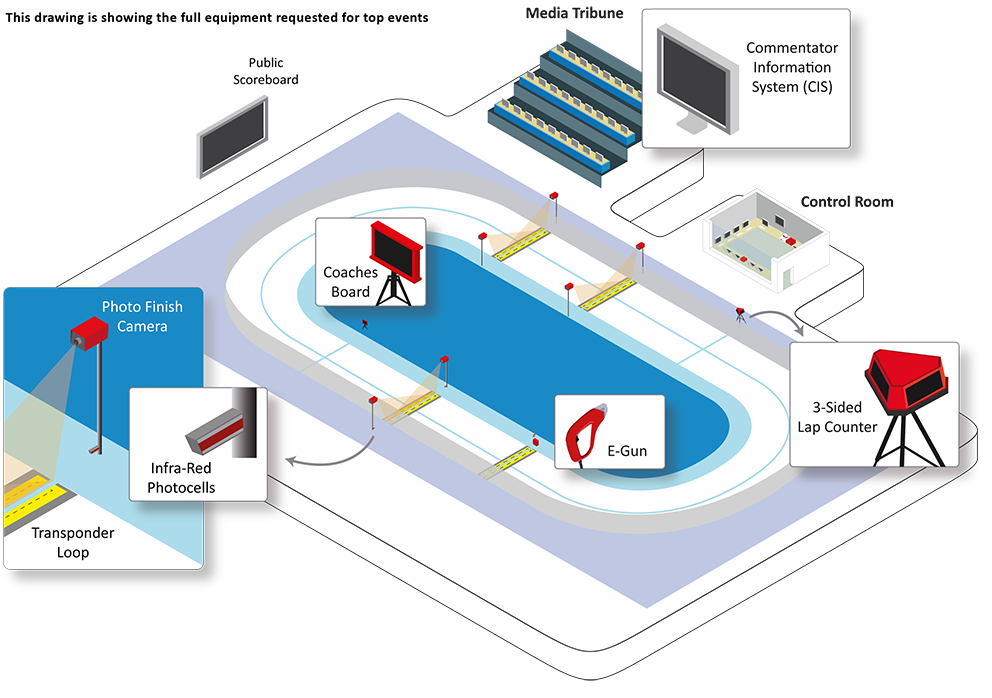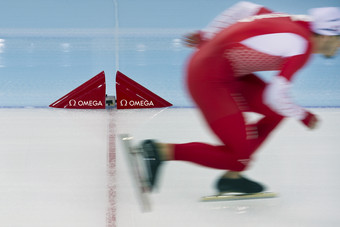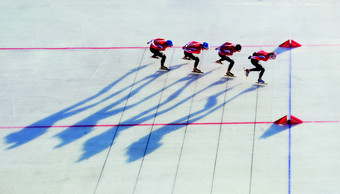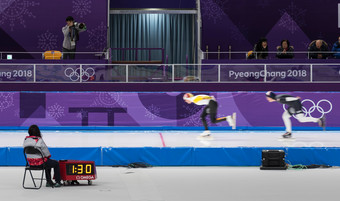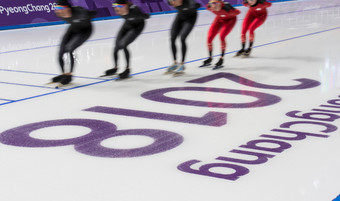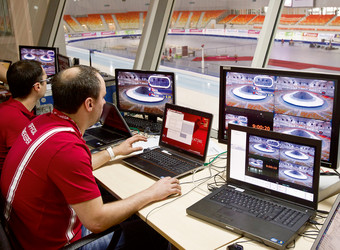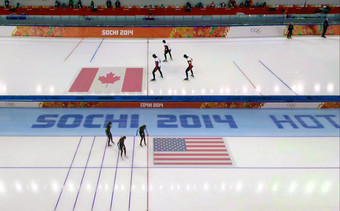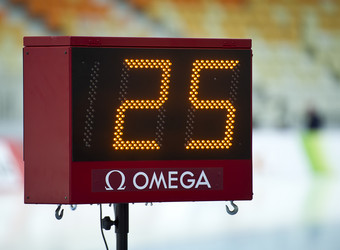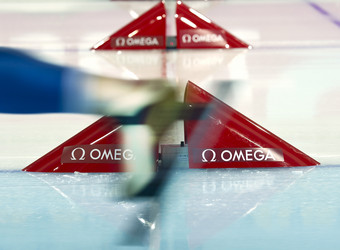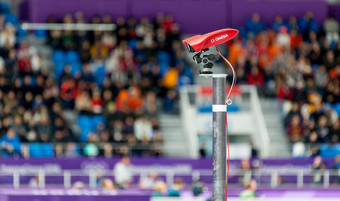Speed Skating
Speed Skating
Speed Skating can be practiced on covered or uncovered ice rinks, and often on artificial ice surfaces, but during Olympic events the rule these days is a covered oval track. According to regulations established by the ISU, a standard track must measure 400 or 333.33 meters in length, but generally speaking the first format is retained for major competitions.
Each race is the departure of two competitors, each leaving from the point where two lines are drawn on the ice to ensure an equal travel distance. The goal is not to beat an opponent but rather to travel a given distance as quickly as possible. Each line has a colour, and in order to make skaters more easily identifiable and offer better visibility to spectators, a cuff of the same colour is worn by the respective skater (white inside, red outside).
The common distances are 500m, 1,000m, 1,500m, 3,000m (for women only), 5,000m, and 10,000m. There are also team pursuit events, in which athletes wear transponders around each ankle.
Swiss Timing and Speed Skating
At Swiss Timing, Speed Skating has been around for a long time and we know from experience that the sport is fast, timed to a thousandth of a second. Judging is based on the front of the blade of the first skate passing the finish line. Differences are often minute and a photo finish is essential to accurately evaluating tight arrivals. As in athletics, cameras are more often than not positioned on the inside and outside of the track in order to have both views.
Scope of Swiss Timing services
Swiss Timing uses a variety of means to communicate results. There is, of course, paper printing of all results and statistics, but scoreboards also bring real time results to the public and athletes. Each TV or radio commentator has a CIS (Commentator Information System) screen that provides direct and permanent access to all results, and the same results are broadcasted live on the Internet. For further information, please click on the links below.
- Timing and scoring
- On-venue results (OVR)
- Public scoreboards
- Virtual graphics
- TV graphics
- Commentator information system (CIS)
Services for Speed Skating
